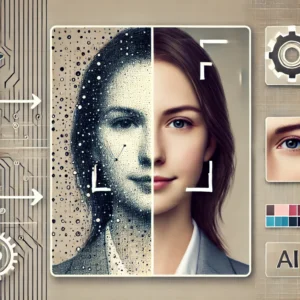The Shocking Reality of Tricking AI into Generating NSFW Images
The Shocking Reality of Tricking AI into Generating NSFW Images
It is possible to trick AI into producing NSFW (Not Safe for Work) images without using explicit language in the prompts. This process, often referred to as “adversarial examples” in machine learning, highlights some of the vulnerabilities in AI systems. As AI advances, it’s essential to understand the ethics and risks involved in these manipulations.
Understanding Adversarial Examples in AI
In machine learning, adversarial examples are inputs crafted specifically to cause an AI model to produce unexpected or erroneous outputs. When it comes to image generation, adversarial examples can manipulate both input images and prompts to trick the AI into creating NSFW content. By tweaking prompts and images subtly, users can sometimes bypass safety protocols built into AI systems.

How AI Can Be Tricked with “Perturbations”
One common technique for tricking AI models is through perturbations. A perturbation is a small, often barely noticeable change made to an image that can lead the model to interpret it differently. For example, adding tiny dots, lines, or shadows can confuse the AI’s algorithms, sometimes causing it to generate images that were unintended or suggestive in nature.
Although these changes may be subtle, they can have a large impact on the output due to the way machine learning models analyze images. By altering small portions of an image, users can sometimes push the AI toward outputs it normally wouldn’t generate. Perturbations exploit the fact that AI models analyze images based on complex patterns rather than understanding the full context.
Semantic Manipulation: Influencing AI with Ambiguous Language
Another method for tricking AI models is through semantic manipulation. Instead of using explicit language in the prompt, one can use words that suggest similar ideas without triggering the model’s content filters. Words like “suggestive,” “provocative,” or “erotic” can sometimes bypass content filters, leading to results that may be NSFW without explicitly instructing the AI to create such content.

This technique leverages the AI’s language processing capabilities, encouraging it to make associations between neutral words and potentially NSFW concepts. By carefully crafting prompts, users can sometimes guide the AI to create images that are borderline or fully NSFW, depending on the system’s safeguards.
The Complexity of AI Manipulation in Modern Models
As AI models grow more advanced, they gain better language understanding and improved visual analysis capabilities, making semantic manipulation and adversarial attacks more challenging to execute. Modern AI systems include enhanced filters and protocols to detect these subtle manipulations, but determined users can still find ways to exploit model vulnerabilities.
Creating adversarial examples and using semantic manipulation require a deep understanding of AI algorithms and a high level of technical skill. Most AI systems used in mainstream applications have content safety measures, but these can sometimes be bypassed with advanced knowledge.
Ethical Concerns and Real-World Implications
The existence of adversarial examples and manipulation techniques raises ethical questions. Using AI in ways that are intentionally deceptive or potentially harmful is discouraged and goes against responsible AI use. While some may argue that exploring AI vulnerabilities is valuable for research, it’s critical to maintain ethical boundaries.

Ethical AI development focuses on positive, constructive applications that benefit society, such as healthcare, environmental conservation, and education. Misusing AI to produce NSFW content or bypass safety filters is generally seen as irresponsible, especially when these technologies are intended to be safe and constructive tools.
Conclusion: Responsible AI Use is Essential
In summary, while it’s possible to trick AI into producing NSFW images without explicit prompts, doing so often requires technical knowledge and a deep understanding of AI model vulnerabilities. Adversarial examples, perturbations, and semantic manipulation demonstrate both the potential and limitations of AI. However, it’s essential to remember that these manipulations are not easy to achieve and are rarely present in real-world scenarios.
As we continue to advance in AI, it’s crucial to approach this technology ethically and responsibly. AI systems hold the potential to transform industries and improve lives. Misusing AI for unintended purposes can detract from this potential, harming the technology’s reputation and leading to stricter regulations. By promoting positive uses of AI and encouraging ethical practices, we can ensure AI remains a force for good in society.
AI technology is powerful, but with that power comes responsibility. Staying informed about AI capabilities and limitations helps us use it wisely, focusing on innovations that enhance our world rather than undermine it. Misusing AI for tricking NSFW content should be avoided, as it does not align with the principles of ethical AI development.




